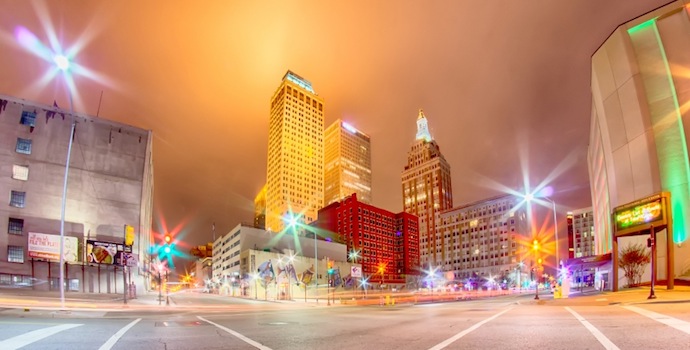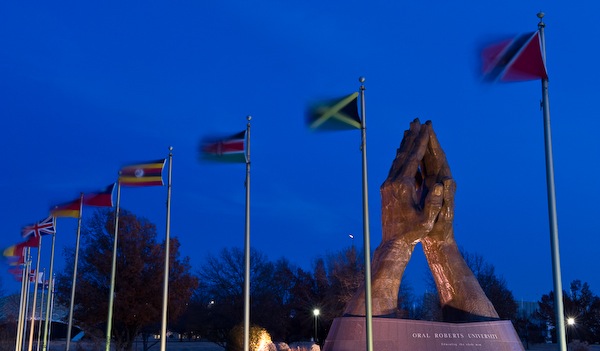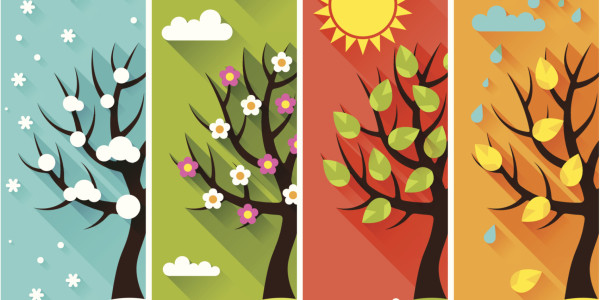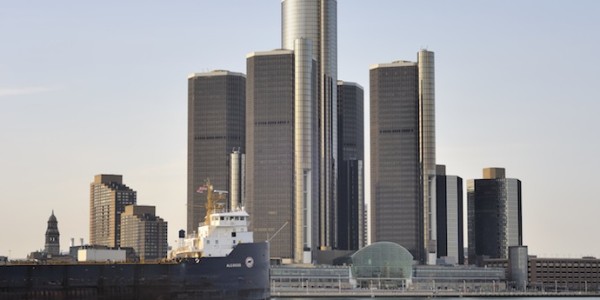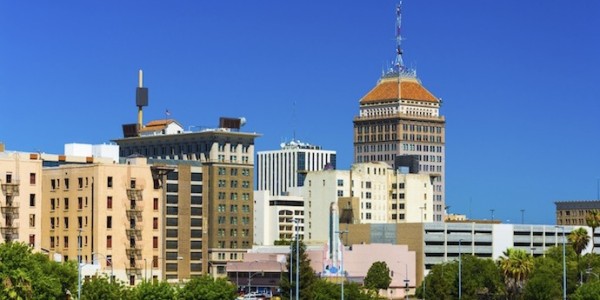Navigation Jump Links
- Tulsa at-a-glance
- What it’s like to live in Tulsa
- Economy and job outlook in Tulsa
- Real estate, cost of living in Tulsa
- The top neighborhoods in Tulsa
- How to get around in Tulsa
- School and education snapshot
- Weather and climate in Tulsa
- 10 can’t-miss things to do in Tulsa
Tulsa At-A-Glance
Tulsa is a southern gem often overlooked for larger metros. But with over 400,000 people calling it home, this little city is the second most populous one in Oklahoma and growing.
Why Tulsa? Located along the Arkansas River, the city is found in Oklahoma’s northeastern “Green Country,” a region named for its beautiful landscapes, lakes and the nearby mountains. Folks find the affordability appealing, too, with Oklahoma being a tax-friendly state for retirees, and economic initiatives like Tulsa Remote making T-Town an attractive option for young professionals.
Keep reading to get a taste of what you need to know before moving to Tulsa.
A Distinct Blend of Culture, Art and Charm
Known for its beautiful art deco architecture and 28 miles that stretch along the famous Route 66, Tulsa has a unique variety of history and modern things to do. Once all about big oil, the city has been coming into its own as a cosmopolitan with the attractions and amenities of bigger cities.
The Tulsa Arts District has seen buildings revitalized and repurposed in recent years. It’s now full of bars, restaurants, venues for events and museums. The city has also embraced its diverse community through public art. Colorful murals can be found throughout downtown and in various neighborhoods.
For music and other performing arts, the Brady Arts District houses plenty of great venues like the Woody Guthrie Center, the Jazz Depot and Cain’s Ballroom, while the Tulsa Performing Arts Center brings Broadway shows, ballet, symphony concerts and more.
Throughout the year there are plenty of opportunities to get to know your neighbors at festivals and events like the Blue Dome Arts Festival, Linde Oktoberfest Tulsa, the Tulsa International Film Festival and the classic Tulsa State Fair.
Tulsa’s Oral Roberts University is home to the world’s largest praying hands — a 30-ton sculpture.
Work Remote? Get Paid When Moving to Tulsa
With the city once known as the “Oil Capital of the World,” it’s no surprise that the oil industry is still a major player in Tulsa. As we look ahead to cleaner energy, Tulsa has been promoting other target industries with growth in advanced manufacturing, aerospace and defense, transportation and tech.
The biggest draw for digital nomads, though, may be that the city has been making efforts to infuse its economy with new life through remote workers looking to relocate. The Tulsa Remote program pays $10,000 to folks moving to Tulsa with an existing remote role. The hope is that these new residents bring big paychecks that help boost the economy, and in return the program promotes a strong community. It’s a great deal for young professionals!
If you’re looking for something local, top employers include BOK Financial, the American Airlines maintenance base and local healthcare systems.
Although the unemployment rate increased slightly toward the end of 2023, it remained relatively low at 3.4 percent.
Tulsa Boasts a Low Cost of Living
If you’ve been looking to buy a home, moving to Tulsa is a good start. Although the cost of living in Tulsa is 3 percent higher than the Oklahoma state average, it’s a healthy 11 percent lower when you look at national numbers. And the cost of housing? A whopping 22 percent lower than the national average! Utilities, healthcare, transportation and food are all lower, too.
Much of the U.S. has seen housing markets remain steady or go up, but Tulsa has seen a slight decrease in home sale prices. In October 2023, the median sale price was down nearly 4 percent at $231,000. Homes are also staying on the market longer and are more likely to see a price drop. Despite this, the Tulsa market is considered highly competitive due to its affordability, so if you find your dream home, make an offer!
As expected, rents in Tulsa are also on the lower side. The median rent for a one-bedroom apartment is just $895, and the median for a two-bedroom only $1,155, with little month-to-month changes in 2023.
This amazing cost of living does come with a price, of course: the median household income in Tulsa falls well below the national average at just $52,438. A much higher percentage of its citizens also live in poverty than national numbers. It’s no wonder the city has sought to boost its economy through initiatives such as the Tulsa Remote program.
A Changing City Full of Distinct Neighborhoods
With Tulsa Remote pulling in a lot of young professionals, homes here are in-demand and neighborhoods are changing. But there’s still plenty of variety, whether you’re looking for that family feel or want to be part of the social scene. Check out these highly recommended neighborhoods for those moving to Tulsa:
BROOKSIDE
This walkable neighborhood is a favorite of young professionals and singles looking for a vibrant social scene. Full of coffee shops, wineries, boutiques and art galleries, there’s plenty to do and see.
DOWNTOWN
The heart and center of Tulsa, Downtown is full of stunning Art Deco architecture that is a big draw for many. It’s also a center of fun and entertainment, granting easy access to some of the city’s best art, performances and restaurants.
CHERRY STREET
Cherry Street is considered one of the best neighborhoods for young families, but it has a lot to offer professionals and singles, too. There’s a lot of shopping and dining here, and it’s home to some of the best art galleries in Tulsa.
RIVERVIEW HISTORIC DISTRICT
As the name suggests, this predominantly middle-class neighborhood features historic homes and is a favorite of anyone looking for stunning architecture and classic styles.
PEARL DISTRICT
The revitalized Pearl District is a great example of urban renewal. Once struggling, it’s now a cultural hub full of startups, making it a favorite of young professionals more than families. You’ll enjoy cafes, art and the Pearl Street Farmers Market.
Other neighborhoods to include in your Tulsa home search:
- Greenwood
- Deco District
- Midtown
- East Village
- The Blue Dome
Commuters Will Love the Lack of Traffic in Tulsa
This city is made up of over 200 square miles, which means living in Tulsa almost certainly requires having your own car. Thankfully, despite being a busy metro area, Tulsans deal with less traffic than the majority of the country. In fact, folks here lose less than a third of their time to rush hour than the residents of New York!
There are some public transportation options available thanks to Tulsa Transit. There are nearly 20 fixed routes to get you around, as well as several connectors and a rapid transit system. It’s good to know, though, that there’s no service on public holidays.
You can also find bikes and electric scooters throughout the downtown area to rent and ride.
Education Opportunities in Tulsa
Oklahoma is known for its education struggles and Tulsa schools don’t fare any better. The Tulsa School District has nearly 70 schools serving over 30,000 K-12 students, with math and reading proficiency scores in the single digits. If you’re moving with kids or plan to start a family, you may want to consider one of the city’s 47 private schools when it comes to their education.
For those seeking a degree, you’ll find no shortage of colleges and universities to choose from. Most of the state’s higher education options are found in Tulsa or Oklahoma City. Tulsa is home to nationally ranked University of Tulsa and Oral Roberts University, as well as Oklahoma State University, Langston University and more.
Weather in Tulsa is Temperate with a Temper
Some residents will tell you that Tulsa is a four-season city while others insist it’s only two (hot and cold). But you will experience some distinct weather patterns with hot, sticky summers and icy, windy winters. Thankfully, snow is rare, and you’ll enjoy an abundance of sun year-round.
The city is also prone to some extreme weather phenomena, including tornadoes, so brush up on your safety procedures when moving to Tulsa.
The coldest month is January, with average low temperatures of 30 degrees Fahrenheit. July brings the heatwaves, with an average high of 93.
10 Can’t-Miss Things to Do in Tulsa
Full of history, beautiful parks, professional sports teams and a bopping nightlife, Tulsa has a lot going on. Here’s a list of 10 must-dos in T-Town:
- Stroll through the stunning themed spaces of the Tulsa Botanical Gardens.
- Check out fun spots along the piece of historic Route 66 that runs through Tulsa.
- Get a taste of history at the Tulsa Historical Society and Museum.
- Snap a shot of yourself with the 75-foot-tall Golden Driller, a symbol of the city’s oil industry and one of the largest statues in the U.S.
- Dine, drink and laugh in the famous Blue Dome District, home to some of the best nightlife in Tulsa.
- Become part of a mystery when you stand in the Center of the Universe, an unexplained anomaly that distorts sound.
- Learn more about famous musicians Woody Guthrie and Bob Dylan at the adjacent Woody Guthrie Center and Bob Dylan Center.
- Educate yourself on the city’s aerospace heritage at the Tulsa Air and Space Museum.
- Catch a concert, live shows or an Oilers game at the BOK Center.
- Spend a day at Mohawk Park and visit the Tulsa Zoo.
Kids can pet the stingrays and feed the turtles at the Oklahoma Aquarium. The 85-acre Tulsa Zoo was named “America’s Favorite Zoo” by Microsoft Game Studios in 2005.

